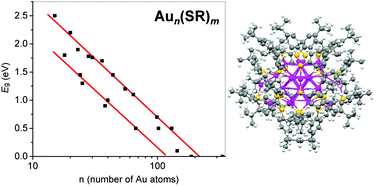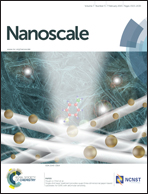Atomically precise metal nanoclusters: stable sizes and optical properties
Abstract
Controlling nanoparticles with atomic precision has long been a major dream of nanochemists. Breakthroughs have been made in the case of gold nanoparticles, at least for nanoparticles smaller than ∼3 nm in diameter. Such ultrasmall gold nanoparticles indeed exhibit fundamentally different properties from those of the plasmonic counterparts owing to the quantum size effects as well as the extremely high surface-to-volume ratio. These unique nanoparticles are often called nanoclusters to distinguish them from conventional plasmonic nanoparticles. Intense work carried out in the last few years has generated a library of stable sizes (or stable stoichiometries) of atomically precise gold nanoclusters, which are opening up new exciting opportunities for both fundamental research and technological applications. In this review, we have summarized the recent progress in the research of thiolate (SR)-protected gold nanoclusters with a focus on the reported stable sizes and their optical absorption spectra. The crystallization of nanoclusters still remains challenging; nevertheless, a few more structures have been achieved since the earlier successes in Au102(SR)44, Au25(SR)18 and Au38(SR)24 nanoclusters, and the newly reported structures include Au20(SR)16, Au24(SR)20, Au28(SR)20, Au30S(SR)18, and Au36(SR)24. Phosphine-protected gold and thiolate-protected silver nanoclusters are also briefly discussed in this review. The reported gold nanocluster sizes serve as the basis for investigating their size dependent properties as well as the development of applications in catalysis, sensing, biological labelling, optics, etc. Future efforts will continue to address what stable sizes are existent, and more importantly, what factors determine their stability. Structural determination and theoretical simulations will help to gain deep insight into the structure–property relationships.


 Please wait while we load your content...
Please wait while we load your content...